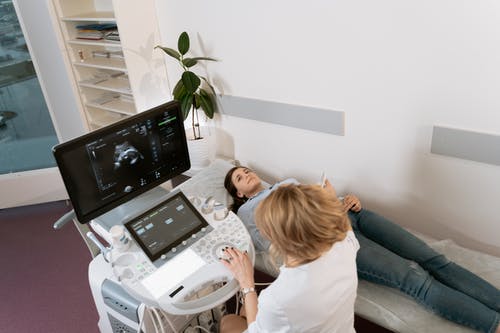Advances in ultrasound technology have significantly improved the quality of patient care. Advanced ultrasound care integrates cutting-edge techniques and tools to provide highly accurate diagnostics and minimally invasive treatments. This article explores the key innovations in ultrasound care, its applications in complex medical cases, and the benefits for both healthcare providers and patients.
What is Advanced Ultrasound Care?
Advanced ultrasound care involves the use of high-resolution imaging, 3D and 4D technologies, and specialized procedures for detailed diagnostics and precise medical interventions. This level of care goes beyond traditional ultrasound, providing more comprehensive and clearer imaging for complex cases.
Key Features of Advanced Ultrasound Technology
High-Resolution Imaging
Advanced ultrasound machines are equipped with high-resolution capabilities, allowing for incredibly detailed images of internal organs, tissues, and blood vessels. This improves the ability to detect subtle abnormalities that may not be visible with standard ultrasound technology.
3D and 4D Ultrasound
3D and 4D ultrasound technology offers a new dimension of imaging. While traditional ultrasound provides flat, two-dimensional images, 3D ultrasound generates lifelike images, and 4D adds the element of real-time movement. These are particularly useful in obstetrics, cardiology, and other fields that require in-depth visualization.
Elastography
Elastography is a specialized ultrasound technique that measures tissue stiffness, often used to detect tumors or liver fibrosis. This advanced feature is a non-invasive alternative to biopsies, offering reliable diagnostic information without surgical intervention.
Contrast-Enhanced Ultrasound (CEUS)
In contrast-enhanced ultrasound, a special contrast agent is injected into the bloodstream to improve the clarity of blood flow and tissue structures. This is particularly beneficial in detecting liver lesions, heart conditions, and vascular diseases. It provides real-time images and is safer than traditional contrast-based imaging methods like CT or MRI.
Applications of Advanced Ultrasound Care
Cardiovascular Imaging
Advanced ultrasound is critical in detecting cardiovascular issues such as heart valve defects, aneurysms, or arterial blockages. Echocardiography, a specialized form of ultrasound, provides detailed views of the heart’s structure and function, allowing for precise diagnoses.
Oncology
In cancer care, advanced ultrasound helps detect and monitor tumors, assess treatment progress, and guide biopsies or ablation. For instance, elastography is often used to differentiate between benign and malignant masses, aiding in early detection.
Obstetrics and Gynecology
3D and 4D ultrasound have revolutionized obstetric care by providing detailed images of fetal development. Advanced ultrasound can detect congenital abnormalities, monitor fetal growth, and assess maternal health conditions like uterine fibroids or ovarian cysts.
Musculoskeletal Diagnostics
Advanced ultrasound is increasingly used in musculoskeletal imaging to diagnose joint, tendon, or ligament injuries. This non-invasive method is ideal for identifying sports injuries and assessing the effectiveness of treatments like injections or physical therapy.
Benefits of Advanced Ultrasound Care
Early and Accurate Diagnosis
Advanced ultrasound care enhances diagnostic precision, leading to earlier detection of diseases. This allows for timely interventions, improving patient outcomes, especially in conditions like cancer or cardiovascular disease.
Minimal Invasive Procedures
Many procedures that once required surgery can now be performed using ultrasound guidance. From needle biopsies to fluid drainage and even tumor ablation, advanced ultrasound reduces the need for invasive surgery, leading to quicker recovery times and fewer complications.
Safer Imaging Option
Unlike imaging methods that rely on ionizing radiation (such as X-rays or CT scans), ultrasound is a radiation-free option. This makes it a safer alternative, especially for pregnant women, children, and patients requiring multiple imaging sessions.
The Role of Specialists in Advanced Ultrasound Care
Expert Interpretation
The effectiveness of advanced ultrasound care depends heavily on the skill and experience of the specialist interpreting the images. Training in these advanced techniques ensures that healthcare providers can accurately diagnose and treat conditions based on high-resolution images.
Interventional Ultrasound
Specialists trained in interventional ultrasound use real-time imaging to perform procedures like biopsies, injections, and even minimally invasive surgeries. This reduces the risk of complications and increases the precision of medical interventions.
Conclusion
Advanced ultrasound care represents a leap forward in medical imaging and treatment. With its high-resolution capabilities, 3D and 4D imaging, and specialized techniques like elastography and contrast-enhanced ultrasound, it offers unparalleled diagnostic accuracy and precision in therapeutic interventions. As technology continues to evolve, advanced ultrasound will play an increasingly central role in delivering safe, effective, and patient-centered care.


